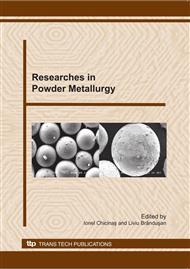[1]
K. Tanaka, A thermomechanical sketch of shape memory effect: one-dimensional tensile behavior, Materials Science Research International 18 (1985), 251.
Google Scholar
[2]
K. Tanaka and S. Nagaki, Thermomechanical description of materials with internal variables in the process of phase transitions, Ingenieur—Archive, 51 (1982), 287–299.
DOI: 10.1007/bf00536655
Google Scholar
[3]
J. G. Boyd and D. C. Lagoudas, A thermodynamic constitutive model for the shape memory materials. Part I: the monolithic shape memory alloys, International Journal of Plasticity 12 (1996), no. 6, 805–842.
DOI: 10.1016/s0749-6419(96)00030-7
Google Scholar
[4]
C. Liang and C. A. Rogers, One-dimensional thermomechanical constitutive relations for shape memory materials, Journal of Intelligent Material Systems and Structures, 1 (2) (1990), no. 1, 207–234.
DOI: 10.1177/1045389x9000100205
Google Scholar
[5]
D.C. Lagoudas, Introduction to Modeling and Engineering Application of Shape Memory Alloys, Springer-Verlag, New York, (2008).
Google Scholar
[6]
L. C. Brinson, One dimensional constitutive behavior of shape memory alloys: thermomechanical derivation with non-constant material functions and redefined martensite internal variable, Journal of Intelligent Material Systems and Structures 4, (1993).
DOI: 10.1177/1045389x9300400213
Google Scholar
[7]
M.A. Savi, A. Paiva and P.M.C.L. Pacheco, Phenomenological modeling of shape memory alloy thermomechanical behavior, Mechanics of Solids in Brazil 2007, Marcílio Alves & H.S. da Costa Mattos (Editors) Brazilian Society of Mechanical Sciences and Engineering, ISBN 978-85-85769-30-7.
Google Scholar


